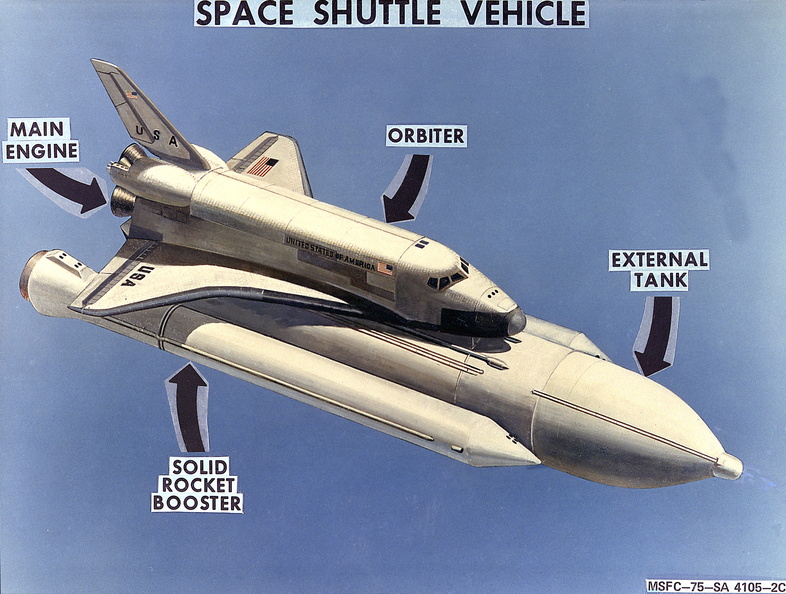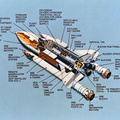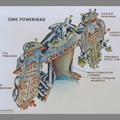
WIKIARCHIVES.SPACE
The Human Spaceflight Archive

The Space Shuttle represented an entirely new generation of space vehicle, the world’s first reusable spacecraft. Unlike earlier expendable rockets, the Shuttle was designed to be launched over and over again and would serve as a system for ferrying payloads and personnel to and from Earth orbit. The Shuttle’s major components are the orbiter spacecraft; the three main engines, with a combined thrust of more than 1.2 million pounds; the huge external tank (ET) that feeds the liquid hydrogen fuel and liquid oxygen oxidizer to the three main engines; and the two solid rocket boosters (SRB’s), with their combined thrust of some 5.8 million pounds. The SRB’s provide most of the power for the first two minutes of flight. Crucially involved with the Space Shuttle program virtually from its inception, the Marshall Space Flight Center (MSFC) played a leading role in the design, development, testing, and fabrication of many major Shuttle propulsion components. The MSFC was assigned responsibility for developing the Shuttle orbiter’s high-performance main engines, the most complex rocket engines ever built. The MSFC was also responsible for developing the Shuttle’s massive ET and the solid rocket motors and boosters.
Information
- Taken in
- Other
- Author
- NASA
- Description
-
The Space Shuttle represented an entirely new generation of space vehicle, the world’s first reusable spacecraft. Unlike earlier expendable rockets, the Shuttle was designed to be launched over and over again and would serve as a system for ferrying payloads and personnel to and from Earth orbit. The Shuttle’s major components are the orbiter spacecraft; the three main engines, with a combined thrust of more than 1.2 million pounds; the huge external tank (ET) that feeds the liquid hydrogen fuel and liquid oxygen oxidizer to the three main engines; and the two solid rocket boosters (SRB’s), with their combined thrust of some 5.8 million pounds. The SRB’s provide most of the power for the first two minutes of flight. Crucially involved with the Space Shuttle program virtually from its inception, the Marshall Space Flight Center (MSFC) played a leading role in the design, development, testing, and fabrication of many major Shuttle propulsion components. The MSFC was assigned responsibility for developing the Shuttle orbiter’s high-performance main engines, the most complex rocket engines ever built. The MSFC was also responsible for developing the Shuttle’s massive ET and the solid rocket motors and boosters.
- Created on
- Albums
- US SPACE PROGRAM / SPACE SHUTTLE / DIAGRAMS
- Source link
- https://www.nasa.gov/reference/the-space-shuttle/#hds-sidebar-nav-1
- Visits
- 66
- Rating score
- no rate
- Rate this photo
- License
- Public Domain
- Modified by WikiArchives
- No (original)
- Downloads
- 1
Powered by Piwigo























